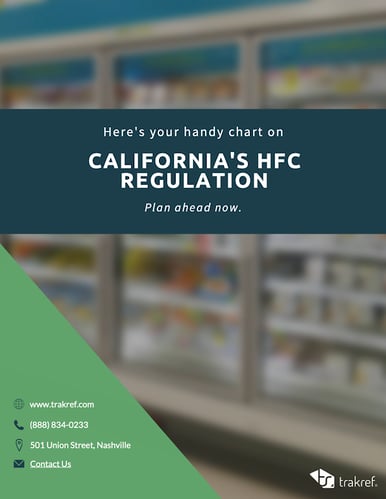
In 2018, CARB adopted a new HFC regulation with HFC prohibitions in certain end-uses, including retail food refrigeration, cold storage warehouses, vending machines, residential refrigeration appliances, and chillers.
More specifically, California’s initial HFC regulation was adopted in March 2018, which incorporated specific requirements of the partially vacated U.S. EPA HFC prohibitions in certain stationary refrigeration equipment.
Shortly thereafter, in September 2018, SB 1013 became law, and this adopted all of EPA SNAP Rules 20 and 21 (except as it applies to MVAC) into state law. These two regulatory policies partly coincided in time, and, as you can guess, it produced stakeholder confusion.
Thus, in January 2020, such regulatory efforts were combined via administrative process and consolidated into one California regulation: the California SNAP Regulation, which is what this chart focuses on.
Knowing these regulations is imperative for companies operating in California. New regulations mean that there is more to report on, and more to understand. Companies much adjust and report accordingly.
Understanding these regulations is not just important to be in compliance. It is also important for the planet. HFCs have high global warming potential (GWP). Therefore, regulations like these in California are important to curbing the emissions that we send into the atmosphere. Being able to track and report on them is ultimately needed for proper refrigerant management and to fight climate change.
Make sure that you not only understand the rules, but are putting them in place and have a plan for compliance. This guide will help.
Join the Refrigerant Geek Community
It's important for you to be in-the-know on what's going on. That's why our team of refrigerant geeks monitor the most important developments and provide-industry leading updates weekly on our blog and in our newsletter.
